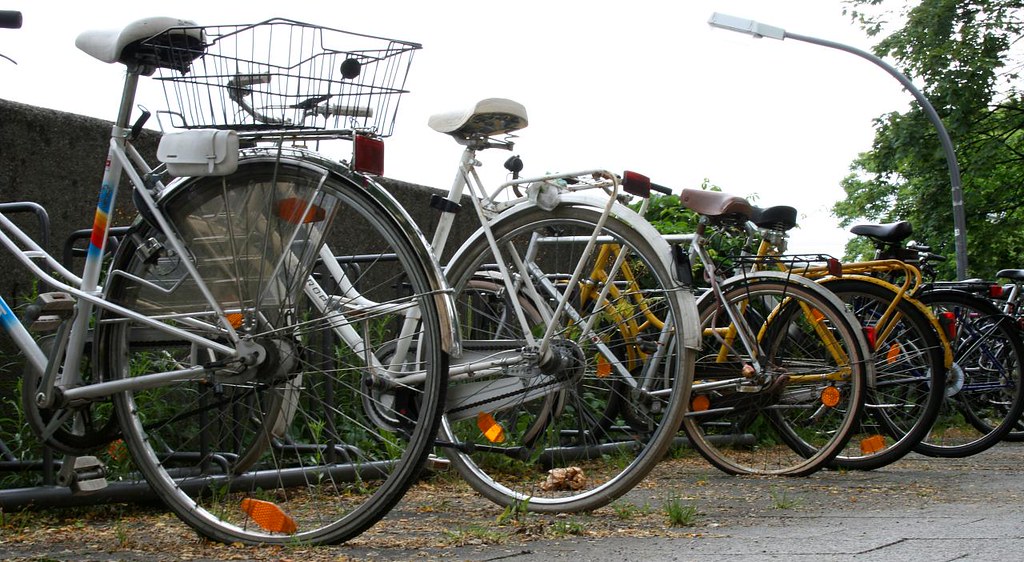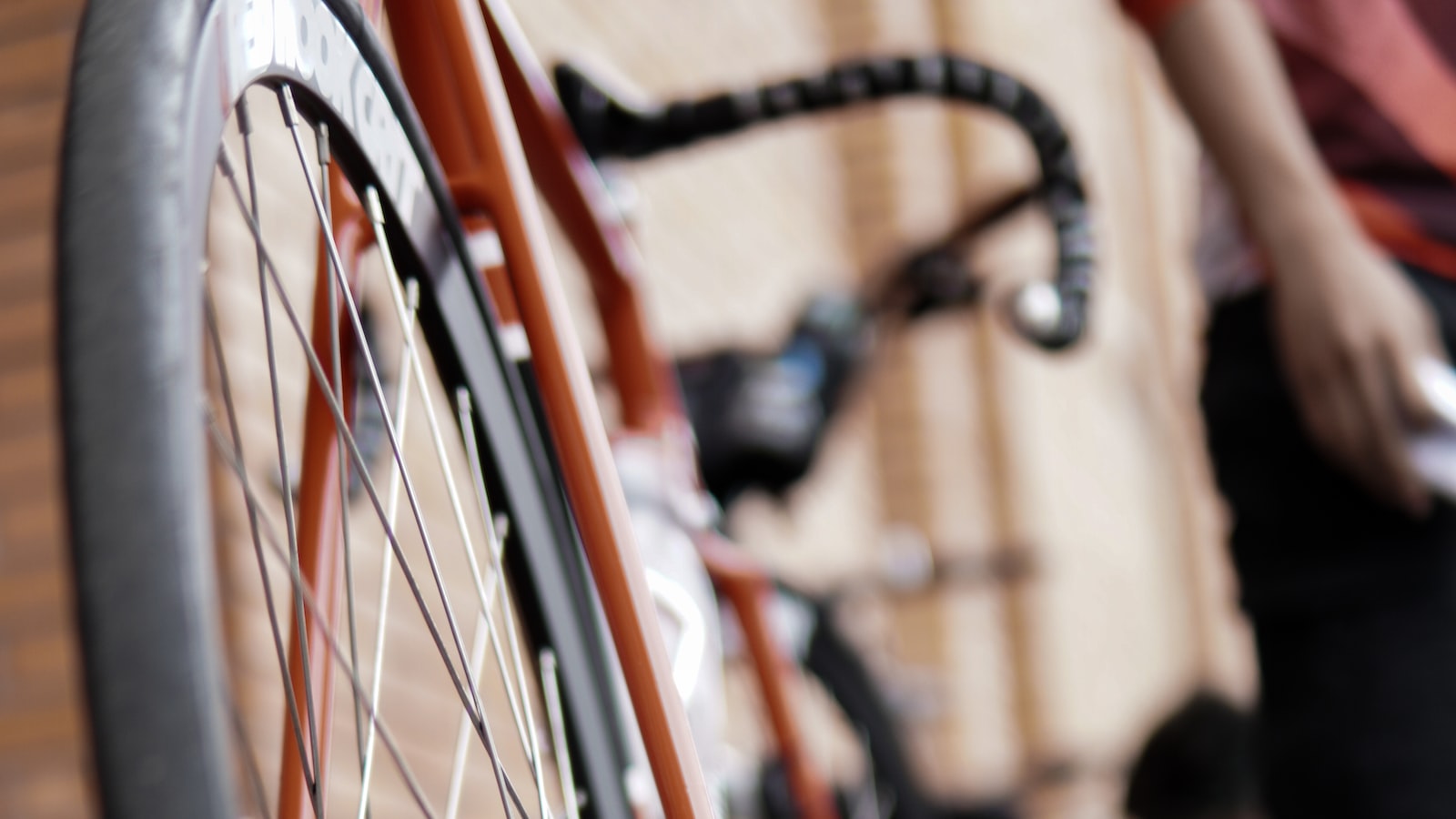Reinventing urban mobility has become a pressing matter in our ever-evolving world, where sustainability and environmental consciousness take center stage. Among the various options that have emerged, one stands out effortlessly: the humble bicycle. With its timeless charm and undeniable benefits, cycling, or what the French call « mobilité douce, » has become a symbol of a brighter, greener future. In this article, we explore the ways in which we can foster and embrace the power of cycling, paving the way for a more sustainable and enjoyable mode of transportation. Hop on, as we embark on a journey of discovery, innovation, and the celebration of mobility on two wheels.
Exploring the Benefits of Active Transportation with Bicycles
Cycling, also known as active transportation, is not only a fun way to get around, but it also brings with it a myriad of benefits for both individuals and the environment. This mode of transport has gained popularity in recent years due to its positive impact on personal health and the reduction of carbon emissions. By opting for the bicycle, you can contribute to a healthier lifestyle and a greener planet. Let’s dive deeper and explore the multitude of benefits that come with embracing active transportation.
Improved Physical Health: Cycling is a fantastic way to incorporate exercise into your daily routine. This low-impact form of exercise not only increases your cardiovascular fitness but also improves muscle tone, enhances flexibility, and boosts overall stamina. Regular cycling can help prevent obesity, diabetes, and heart diseases while strengthening your immune system. Additionally, it is also a great stress-reliever, releasing endorphins and leaving you with a positive frame of mind.
Reduced Environmental Impact: With the ever-increasing concern about climate change, opting for bicycles as a mode of transportation can significantly contribute to reducing carbon emissions. Unlike cars, bicycles do not emit harmful pollutants into the atmosphere, making them an eco-friendly choice. By embracing active transportation, you can play your part in preserving our planet for future generations. Moreover, promoting cycling as a sustainable travel option can help pave the way for better urban planning and infrastructural development, leading to more bike-friendly cities.

Unlocking the Potential of Micromobility for Sustainable Cities
Micromobility, specifically through the use of bicycles, holds immense potential for creating sustainable and eco-friendly cities. The bicycle is not just a means of transportation; it is a symbol of freedom, health, and harmony with the environment. By embracing and encouraging the use of bicycles, cities can unlock a multitude of benefits that will contribute to a brighter and greener future.
Bicycles offer a range of advantages that make them an ideal choice for promoting sustainable mobility. Here are a few ways cities can foster the growth of micromobility:
- Infrastructure Investment: Building dedicated bicycle lanes and improving existing infrastructure is essential for enabling safe and convenient cycling. By investing in the development of a comprehensive network of bike paths, cities can encourage more people to choose bicycles as their preferred mode of transportation.
- Public Bicycle-Sharing Programs: Implementing and expanding public bicycle-sharing programs allows residents and visitors to conveniently access bicycles when needed. These programs promote the use of bicycles for short-distance trips, reducing traffic congestion and emissions.
- Promotion of Cycling Culture: Creating a cycling-friendly atmosphere involves not only physical infrastructure but also fostering a positive attitude towards cycling. Organizing community events, educational programs, and campaigns that highlight the benefits of cycling can help in promoting a cycling culture within the city.
The potential of micromobility, specifically through the use of bicycles, to transform cities into sustainable and livable spaces is undeniable. By actively incorporating these strategies and embracing the power of the bicycle, cities can unlock a brighter future for their residents and the environment.

Promoting Cycling Infrastructure and Safety Measures
Cycling is not just a means of transportation; it represents a lifestyle that benefits both individuals and the environment. By prioritizing cycling infrastructure and implementing safety measures, we can further encourage sustainable mobility and create cities that are safer and more pleasant to live in.
One of the key steps to promoting cycling infrastructure is the development of interconnected bike lanes and paths. These dedicated routes ensure the safety of cyclists and create a more seamless and enjoyable riding experience. By investing in well-designed and properly maintained cycling infrastructure, we can encourage more people to choose bikes as a mode of transport.
- Integrate bike lanes into existing road networks, connecting key destinations and residential areas.
- Implement separated bike lanes to provide a safe space for cyclists and prevent conflicts with motorized traffic.
- Install bicycle-friendly traffic signals and signage to improve cyclist visibility and ensure smooth interactions with other road users.
Additionally, ensuring the safety of cyclists is paramount. Creating awareness campaigns and education programs can help reduce accidents and promote a culture of mutual respect on the roads. Some effective safety measures include:
- Mandatory helmet usage, especially for children and beginners.
- Implement strict penalties for drivers who fail to yield to cyclists or violate their right of way.
- Regular maintenance and inspection of cycling infrastructure to prevent hazards.

Encouraging Active Mobility: Strategies for Bike-Friendly Communities
Bike-friendly communities are essential for encouraging active mobility and promoting a sustainable lifestyle. Here are some strategies that can help foster a bike-friendly environment:
1. Develop a Comprehensive Network of Bike Infrastructure:
A well-connected network of bike lanes, shared paths, and bike parking facilities makes cycling safer and more convenient for everyone. Building dedicated cycling infrastructure not only encourages more people to hop on their bikes, but also enhances the overall livability and attractiveness of a community. Prioritizing the expansion and maintenance of this infrastructure is crucial for creating a bike-friendly environment.
- **Benefits:**
Improved safety for cyclists and pedestrians
Access to key destinations (schools, workplaces, shops)
Reduced traffic congestion and pollution - **Strategies:**
Collaborate with urban planners to integrate bike lanes into city development plans
Expand the existing bike network to cover all neighborhoods
Ensure regular maintenance and repair of bike infrastructure
2. Promote Cycling Education and Safety:
Empowering individuals with the knowledge and skills to cycle safely is fundamental to building a bike-friendly community:
- **Education Programs:**
Partner with schools and community organizations to introduce cycling education programs for all age groups. These programs can include traffic rules, bike maintenance, and safety training. - **Public Awareness Campaigns:**
Raise awareness about the benefits of cycling and educate motorists on sharing the road with cyclists. Campaigns can include informative signage, social media campaigns, and community events. - **Collaboration with Law Enforcement:**
Work together with law enforcement agencies to ensure enforcement of traffic laws to protect the safety of cyclists and pedestrians.
By implementing these strategies, communities can create an environment that embraces and encourages active mobility through cycling. Remember, a bike-friendly community is not only healthier and more sustainable, but it also fosters a sense of community and connection among its residents.
In today’s fast-paced world, finding sustainable and efficient means of transportation has become a pressing concern. We’ve explored the numerous benefits of favoring soft mobility with bicycles, highlighting the positive impact it can have on our cities, health, and environment. From reducing traffic congestion and air pollution to promoting physical fitness and fostering a stronger sense of community, the bicycle offers a simple yet powerful solution.
As we bid adieu to this article on « Comment Favoriser la Mobilité Douce avec le Vélo, » we invite you to embrace the wondrous possibilities that lie ahead. Let the two-wheeled revolution steer us towards a future where vibrant bike lanes replace endless car queues. Picture a scene where the melodies of bicycle bells resonate through urban landscapes, as we gracefully navigate towards a greener and brighter tomorrow.
So, hop on your trusty steed, feel the wind in your hair, and embark on a transformative journey. Let every pedal stroke propel you towards a world that values sustainable transportation as a vital cornerstone of progress. Together, we can reshape our cities, reconnect with nature, and unlock the limitless potential that lies within each of us.
With the wheels of change set in motion, the time has come to embrace the beauty, simplicity, and freedom of riding a bicycle. So, whether you’re commuting to work, exploring new horizons, or simply enjoying a leisurely ride with loved ones, always remember that the power to foster soft mobility lies within you. Take the handlebars and lead the way towards a future where the hum of car engines makes way for the melodious symphony of cycling.
Thank you for joining us on this exhilarating journey as we shed light on the wonders of promoting soft mobility with bicycles. Together, let us champion a new era of sustainable transportation, where the humble bicycle reigns supreme. Our cities and future generations will forever be grateful for the tireless revolutionaries daring to pedal their dreams into reality.




